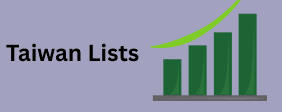In these times of digital evolution, many marketing experts are using tools to maximize their advertising strategies, and one of them is workflow. At Econsultoria, a digital marketing agency , we want to help you automate and personalize interactions with your users.
We invite you to explore the concept of workflow in depth, its classification, and how you can leverage it for your campaigns, taking into account its functions. Accelerate your sales by enhancing your online presence with the help of this incredible tool!
What is workflow?
A workflow is a tool used to automate organized rcs data and hierarchical processes based on a company’s commercial activity. In the context of digital marketing, workflows are used to follow up on prospects or leads, optimizing resources to personalize and accelerate sales.
Types of workflows
Workflows can be classified into different types according to their functions:
Ad hoc workflow
This type of workflow allows rules to be modified during operation, offering flexibility in processes.
Production workflow
It is a workflow that defines pre-established rules, providing stability and focus on known actions.
Administrative Workflow
It is a tool that combines the flexibility of ad create a successful sales plan that is achievable hoc with the structure of production, ideal for predictable and repetitive tasks.
Benefits of using workflows in email marketing
Some key benefits of incorporating workflows into email marketing strategies include:
- These automated tools inform companies through an efficient communication strategy when there is a need to increase their customer relationships in a personalized way.
- It has the ability to simultaneously and massively distribute messages with relevant content to a segmented audience list via email.
- Provides timely, direct, and appropriate adb directory information, bringing leads closer to conversion.
Workflows are a key tool in email marketing for automating and personalizing communications with subscribers. They allow you to send specific messages at predetermined times or based on user actions. Here’s a brief guide on how to use them:
- Audience Segmentation : Before creating a workflow, segment your subscriber list into groups based on interests, behaviors, or demographics, allowing you to send more relevant and personalized messages.

